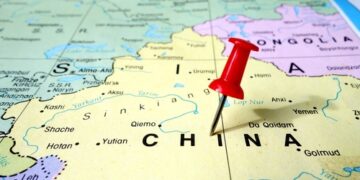During the SAFETY4SEA Hamburg Forum 2024, Nikos Georgopoulos, Chief Business Development Officer, Diaplous, gave a presentation on emerging ship security challenges. The presenter explored the current reality in the Indian Ocean and Red Sea concerning maritime terrorism and attacks on commercial shipping and explained that understanding the reasons behind these attacks is crucial for devising effective countermeasures.
Houthi presence in an ever-tense area
A few years ago, in 2022, the industry decided to declassify the high-risk area of the Indian Ocean and the passage through the Red Sea. Concerns were raised about this declassification, removing the perceived threat. According to the theory of risk assessment, a serious threat requires intention, capability, and opportunity. Over time, while the intention and capability remained, the opportunity diminished. The mitigation measures adopted were strong enough to make pirates change careers. This meant fewer attacks from pirates, with the last one being in 2017. However, this has changed in the last few months.
The situation in October, with Hamas attacking the Israelis and capturing over 240 hostages, altered the dynamics. This event forced the Israelis to retaliate against Hamas, making an already critical area even more tense.
The Houthis started attacking the maritime industry to support the Palestinians and the Israeli attacks.
These groups, with strong Iranian influence and support, began expressing their solidarity through maritime attacks.
The Houthis are based in the western area of Yemen. They are not state forces but began as an opposition party and evolved into a paramilitary organization. Their military structure, assets, and capabilities are significant, but they are not state actors. The Houthis’ capabilities include missiles and drones, as demonstrated during a parade in Yemen.
Lessons learned from MV Galaxy Leader: Why the seizure operation succeeded
The last few months have been marked by significant events, including the Galaxy Leader incident and the increased involvement of international forces.
The Galaxy Leader, a large, fast ship, was considered secure in a past risk assessment. The vessel did not have any armed guards onboard and was sailing alone. Alas, Houthis saw an opportunity, and the ship was attacked using speedboats and a helicopter.
This operation was distinct from past attacks, and the vessel was captured, demonstrating the Houthis’ capabilities. Such capabilities have been present in Iranian attacks, but it is important to note that Iranians, unlike the Houthis, employ state forces.
The capture of Galaxy Leader was a critical event that changed how the world viewed Houthis. The reasons behind its seizure include the following:
- The high freeboard and speed of the vessel drive owners and operators not to take precautions while sailing in high-risk areas. Most of such type vessels, without excluding a few gas carriers (LNG) and VLCC tankers in ballast condition, do not proceed with a risk management plan prior to the vessel’s departure, which may include a thorough risk assessment, awareness training, the PMSC Team onboard, physical security measures (hardening), enhanced vigilance and watchouts, and close cooperation with authorities and organizations (UKMTO, MICA, MSCHOA, etc.) and Navy assets in the area.
- This normality leaves space for cultivating a behavior pattern and mentality that these vessels are figurative and secure, leading them to sail in high-risk areas without assessing any type of risk and sailing during the daytime, thus increasing their level of vulnerability.
- The vessel was sailing with AIS switched off and, therefore, triggered Houthis reaction, making them believe the “target has something to hide,” as they have previously stated. The switched off AIS deteriorates the situation because nearby warships cannot identify the vessel’s position under maritime harassment.
- The crew, while sailing in the Red Sea, seems to perform an ordinary daily task without considering that an imminent threat is out there 24/7 and 360° around the vessel. This attack result was achieved thanks to speed, ambush, and, likely, crew negligence, slow performance, and late reaction.
Houthi attacks and the reemergence of Somali piracy
The hit map bellow shows attacks not only in the Bab el Mandeb and the area near Yemen but also 300 miles off the coast of India and 400 miles off the coast of Somalia.
These attacks, unrelated to the Houthis or terrorism, are pure piracy attacks. They have captured vessels but have not yet demanded ransom, indicating uncertainty about their intentions.
Somali pirates have made their first return in years, with attacks in the Gulf of Aden and hijackings in the Indian Ocean. The indicative link between Houthis and Somali pirates poses an elevated risk for commercial vessels in the wider area.
Mundus operandi
The majority of attacks have involved missiles and drones. The impact of these attacks is not severe. The missiles used are ‘fire and forget’, meaning they cannot be guided after launch. Their targeting capability is limited. Drones have minimal explosive capacity, leading to relatively minor damage.
Warship contributions are crucial in the area. Only warships have the assets to intercept missiles or drones. They are critical in targeting bases and infrastructure from which the HTIs launch their attacks.
Efforts by the US and UK forces have been focused on protecting vessels in the area, intercepting flying objects, and destroying the infrastructure used by the HTIs to launch their weapons.
While some infrastructure has been destroyed, studies suggest the Houthis retain 60–70% of their capability to launch missiles and drones.
The impact of Houthi attacks in the area
The continuing Hamas-Israel war has the potential to spill over into neighboring countries, including those bordering. Escalation could lead to increased instability, impacting the security of the Red Sea region.
Following the attacks in early January, INTERTANKO, which represents around 70% of the world’s oil and gas tankers, warned members to avoid Yemen. Soon enough, many companies chose to reroute around Africa.
However, the Red Sea is a vital trade route, with a significant amount of global trade passing through it. The ongoing disruption caused by the war could result in economic losses due to delayed or interrupted shipments and barriers to the supply chain, affecting global markets.
From a commercial perspective, Houthis, Somali pirates, and Iran have been—up to now—extremely effective in disrupting commercial shipping, with their operations appearing to expand.
There is a significant diversion for merchant vessels heading to the Cape of Good Hope, with more substantial implications for commercial shipping in the long term. Any re-routing is expected to increase transit time by 7–10 days. Inflation, rates, and trade costs will rise accordingly.
Best practices
For transiting vessels to reduce the risk while in the Indian Ocean and Red Sea, it is vital that:
- Vessels should transit through the recommended Maritime Security Transit Corridor (MSTC), which consists of the Internationally Recommended Transit Corridor (IRTC), the BABTSS, and the TSS West of the Hanish Islands (two-way route).
- All crew members maintain the highest levels of vigilance with a 24-hour visual and radar watch, particularly when sailing through the Yemen EEZ, at anchor, operating in restricted maneuvering environments, or proceeding at slow speeds.
- All vessels scheduled to cross the area should sail outside Yemeni waters and during nighttime, if possible, and increase their distance from Iranian, particularly Islamic Revolutionary Guards Corps (IRGC) assets, and Houthi controlled areas.
- Crews are strongly advised to review and study Article 110, “Right of Visit,” of the United Nations Convention on the Law of the Sea (UNCLOS), which outlines the justifications for a warship’s visit or boarding of a foreign vessel.
- Bridge teams must be aware of how to react in case of any type of maritime harassment.
- Report any suspicious activity in the area to the authorities.
- Incorporate appropriate protective measures into the vessel security plan.
- Monitor relevant VHF and other communication channels.
- Automatic Identification Systems (AIS) and Long-Range Identification and Tracking (LRIT) systems are switched on and functional.
- Apply BMP5 mitigation measures, and specifically Sector 7, in the case of military intervention.
- Minimize crew deck movements while transiting through the area, particularly to and from the Gulf of Aqaba, the Southern Red Sea, and GoA.
- Fortify the vessel’s CITADEL and conduct a detailed SACE (Ship’s Antipiracy Capabilities Effectiveness) drill.
- Harden the HELIPAD or WINCH area of the vessel and make it difficult for the helicopter to approach.
- Early detection and announcement of a helicopter or fast boat approach.
- Implement detailed SOPs, specifically related to military intervention and Houthi military attacks, focusing on early warning and deterrence.
- Deploying security teams onboard the vessel ensures smooth transit and operation. Deploy teams have the necessary training and experience to make informed decisions, keep vessels clear of small boats, dhows, and fishing vessels, and, if necessary, take evasive actions and request assistance as needed, always bearing in mind not to escalate Rules of Use of Force (RUF) in the case of military intervention.
Finally, escalating attacks on vessels in the Red Sea are adding constraints to shipping routes already impacted by conflict and climate change—the Black Sea and Panama Canal, respectively. These circumstances make it more apparent than ever that smooth sailing on the high seas should not be taken for granted.
Above article has been edited from Nikos Georgopoulos’ presentation during the 2024 SAFETY4SEA Humburg Forum.
Explore more by watching his video presentation here below:
The views presented are only those of the author and do not necessarily reflect those of SAFETY4SEA and are for information sharing and discussion purposes only.































































